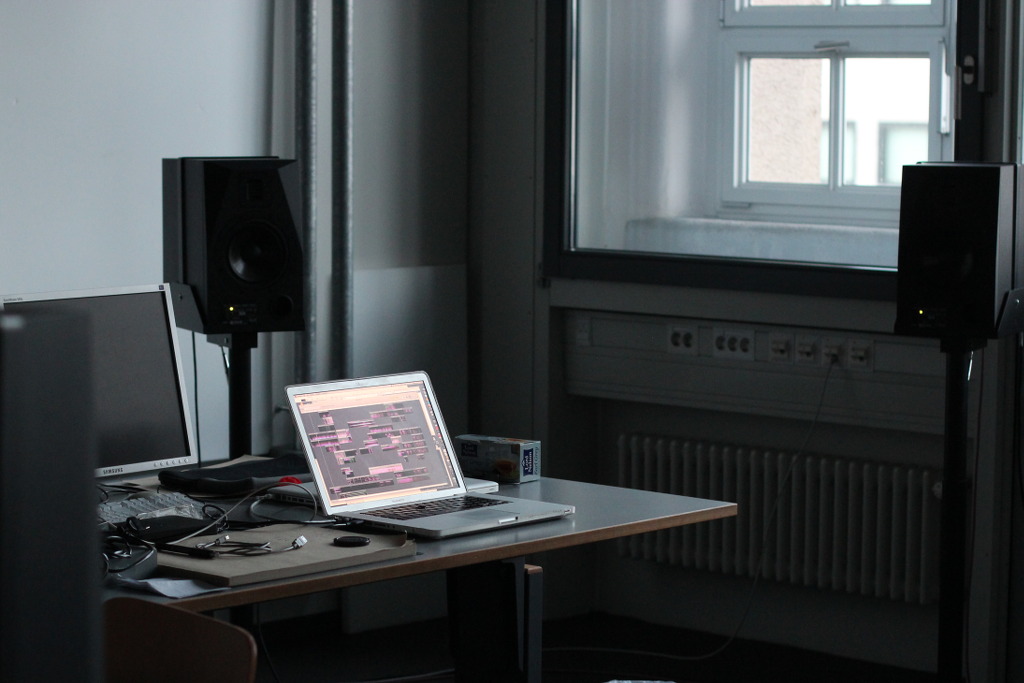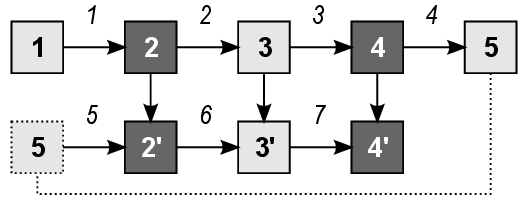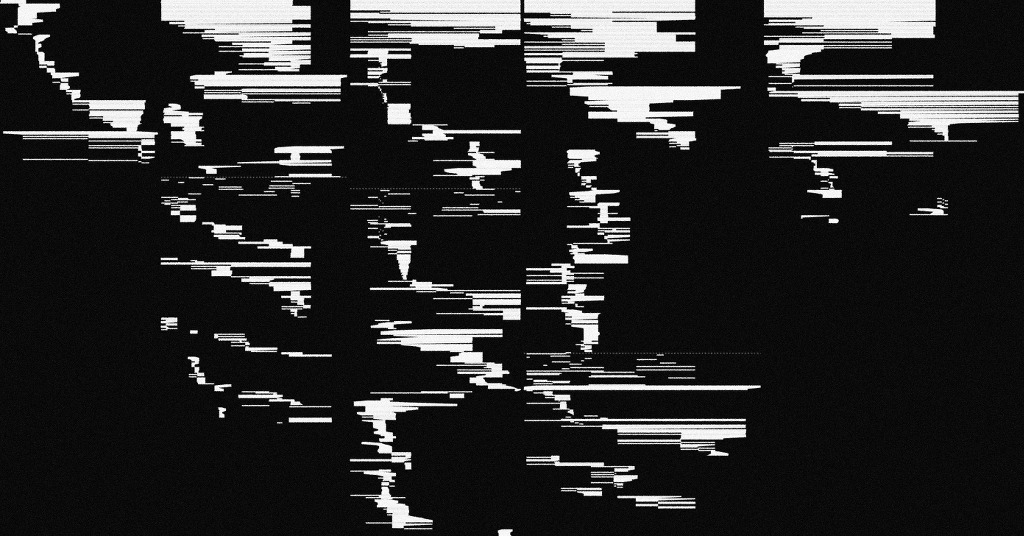(Inde)terminus (2013)
electroacoustic studies, 8-channels.
(Inde)terminus is the working title for a series of studies. They are in no way conclusive, but I am imagining to carry on a project under this title in the future. The name refers to Gottfried Michael Koenig’s tape piece Terminus I from 1961 which is based on a scheme for deriving sounds from previous sounds by applying a set of transformations. Two aspects are relevant: First, the wish to abandon “manual” labour in favour of a more or less mechanical process, and second, the relation of the parts of the work through their genealogical proximity.
My experiment begins with an initial hand-constructed canvas of three minutes duration, sparsely placing sounds on an 8-channel layout. In the next step a “bounce” is carried out—a flattening operation that mixes together all elements—and fed through a signal processing stage, becoming the blueprint for the next iteration. Here, a new canvas is built around this blueprint, possibly cutting it up, removing some parts of it and adding new sounds. Then again a bounce and a transformation is carried out, and so forth. The sequence is illustrated in the middle image below.



In this study the transformation was a segmentation and reversal of the resultant segments. Since the next iteration would again reverse the temporal succession, a specific similarity arises within the group of even-numbered iterations and within the group of odd-numbered iterations (bright and dark elements in the diagram). Finally a real recursion is introduced: The input to the initial bounce is exchanged for the result of the most recent iteration, retroactively re-triggering the bounce and transformation (bottom row in the diagram). Consecutively, the iterations would be re-worked, a procedure that could be repeated ad infinitum, explaining the title of the study.
I also observed the motion of tape composition within these iterations. The right hand image above is an illustration of these motions. Columns correspond to iterations, white elements indicate modification of objects, syntactical (performance) time using the horizontal axis and compositional time (version evolution) using the vertical axis. This visual translation process could be interpreted again. One would find the “carriage returns” in scanning through the timelines. One would discern the initial phase of each iteration from the subsequent refinement. One would see moments of obstinate distillation at a particular spot; see at which point in time a certain part of the piece is more or less finished…
Below is a particular rendering of some of the studies. Iterations 2 and 4, as well as—after the recursion—2’ (or 6) and 4’ (or 8) in the diagram are put in spatial opposition, on the left and right hemisphere of a binaural reproduction. One thus hears in each instance two iterations concurrently, separated in composition time by two iterations.
(Inde)terminus, iterations 2 and 4 (binaural; use headphones)
(Inde)terminus, iterations 6 and 8 (binaural; use headphones)
Further elaboration on the topic can be found in the artist talk that was part of my residency at ZKM 2013: IMA Lab No. 15